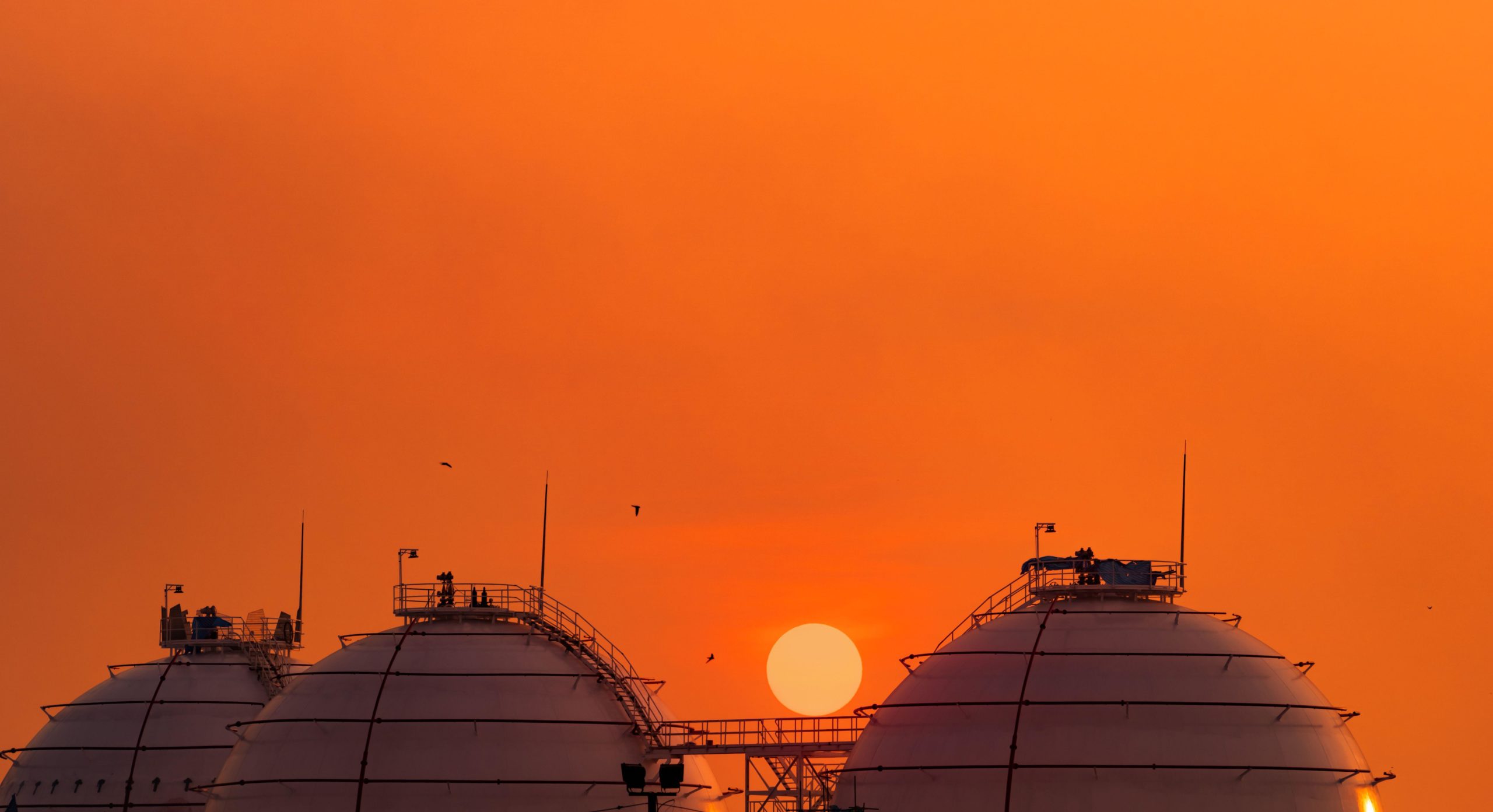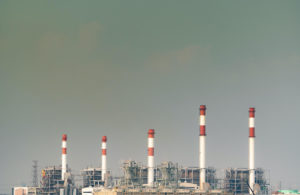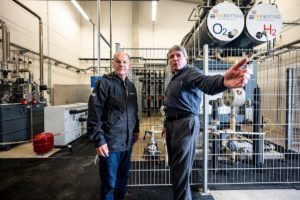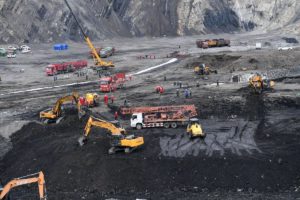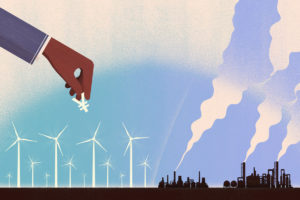Across Asia, there are plans for more than 285 gigawatts of new gas-fired power plants, an expansion that would nearly double the region’s gas power capacity, according to Global Energy Monitor.
Southeast Asian countries are planning about half of the additional capacity in response to an expected surge in post-pandemic demand, while dwindling domestic gas production drives a rush to scale up imports of LNG.
What is LNG?
Liquefied natural gas (LNG) is gas that has been cooled to -162C until it becomes a liquid that is about 600 times smaller than its original form, making it easier to transport
This year, the Philippines and Vietnam are anticipated to import their first LNG cargoes. Two new LNG terminals are expected to come online in Vietnam and one in the Philippines, while another is set to open in Thailand, which is the region’s top gas consumer, Abhishek Rohatgi, Asia gas demand specialist at BloombergNEF, told China Dialogue.
In the period up to 2025, the International Energy Agency has forecast Asia’s emerging economies to be the second-largest growth market for LNG demand after China. (China and India were excluded from the emerging category for the purposes of the analysis.)
“That has sparked this huge frenzy of multibillion-dollar projects,” said Sam Reynolds of the Institute for Energy Economics and Financial Analysis (IEEFA), a US-based thinktank. “Many developers are seeing opportunities where they haven’t seen them before”.
The myth of the ‘bridging fuel’
Oil majors and LNG exporters have pitched gas as a “bridging fuel” for Asia’s emerging economies. They argue it is a reliable and cleaner alternative to coal that can support decarbonisation efforts by supplementing intermittent renewable energy, without compromising economic growth.
But the expansive pipeline of new projects is a risky bet given record-high gas prices. Meanwhile, the cost of renewable energy and storage technologies continues to fall, meaning investments in gas may only pay off in an overheated world, analysts told China Dialogue.
“Renewable energy with storage is, or soon will be, cheaper than gas across the region, far sooner than the end date of 20-year LNG contracts,” said Robert Rozansky, an LNG research analyst at Global Energy Monitor.
Recent experience in Vietnam has shown that a rapid, large-scale deployment of solar and wind can meet electricity demand growth and even reduce the share of fossil fuels in the generation mix, according to the Ember Global Electricity Review. The country increased its solar generation by 337% in 2021, which helped to drive down both coal and gas usage.
The International Renewable Energy Agency found that renewable projects built by emerging economies in 2020 will save up to US$156 billion over their lifespans. Scaling up renewables now will provide a cheaper and faster route to decarbonise power systems than building and eventually retiring fossil fuel infrastructure.
Tightening climate policies could “cause gas facilities to close before the end of their intended lifespans, harming economies and workforces that have grown to rely on them,” Rozansky said.
But major gas producers, seeking to create new consumption markets, have continued to promote gas as an effective climate and development strategy for low and middle-income countries.
“Coal-to-gas switching is a dominant theme in Asian gas in the medium-term,” Wood Mackenzie’s vice president Valery Chow told a conference in June.
“With coal currently accounting for more than 50% of the energy supply mix, there are significant opportunities for increased gas consumption as a means of supporting carbon reduction targets.”
Producers were quick to spot the opportunities: last year, the Russian energy ministry marketed gas as an “ecological-friendly fuel” to help Southeast Asian nations shift from polluting coal and diesel. In 2020, Japan – an LNG importer – tried to stabilise the volatile global LNG market by encouraging its consumption in other countries, similarly promoting the fuel as a cleaner alternative.
Meanwhile, in the US, the Trump administration billed LNG as “freedom gas” that could give its allies “a diverse and affordable source of clean energy” while creating destinations for US exports.
In a memo dated July 2021, the US Agency for International Development encouraged the Philippines to import US LNG as a cost-competitive and effective climate strategy “to complement and supplement variable renewable energy”.
Months later, at the COP26 climate talks in Glasgow, the US and European nations committed to end international financing of fossil fuels, including gas, by the end of 2022 and to prioritise clean energy, challenging the narrative that gas was necessary to emerging countries’ decarbonisation efforts.
Locking Asia into high emissions
Opponents argue that using gas as a transition fuel to replace coal will lock in costly and carbon-intensive infrastructure.
The notion that gas is cleaner than other fossil fuels, particularly coal, has come under growing scrutiny. The Natural Resources Defense Council found that the near-term climate impact of US LNG is 67–74% that of coal.
As such, there is no place for additional gas capacity in a carbon-neutral world. New investments in fossil fuels, including gas, needed to stop by the end of 2021 to align with a 1.5C limit on global heating – the Paris Agreement’s more ambitious goal, according to the International Energy Agency.
Analysis by Global Energy Monitor found that if planned LNG import terminals and gas pipelines in Asia were built and run at full capacity, they would enable enough consumption of imported gas to use up a quarter of the world’s remaining carbon budget for a 50% chance of limiting warming to 1.5C.
It is unlikely that every project in the pipeline will be built, but the region’s gas rush threatens its climate goals and could “make it more difficult for the world to avoid the worst impacts of climate change,” Rozansky said.
Gas-fired power plants also emit nitrogen oxides, which contribute to air pollution in the form of PM2.5, nitrogen dioxide and ozone.
Yet, the perception of fossil gas as clean has seen gas-fired power plants “built in densely populated areas where a coal plant would not be accepted”, Lauri Myllyvirta, of the Centre for Research on Energy and Clean Air, told China Dialogue.
Bloated pipeline, volatile market
Traditionally, Asian countries have planned their electricity provision around large, centralised power plants for baseload power. “Gas is an opportunity to continue that same electricity sector philosophy, just using a different fossil fuel,” Reynolds, of IEEFA, explained. Emerging Asia will need some LNG to compensate for the decline in domestic production, but there is a clear “mismatch” between investors’ expectations and what demand will actually look like, he warned.
A granular project-by-project analysis by IEEFA in seven of Asia’s emerging markets found that the scale of the gas pipeline was “unrealistic”.
It concluded that 62% of the proposed LNG import terminal capacity and 66% of gas-fired power capacity are unlikely to be built.
In the Philippines, 66% of planned LNG import terminal capacity and 73% of planned gas-fired power capacity were deemed unviable and unlikely to be realised.
Current gas demand in the archipelago is concentrated among five gas-fired power plants that rely on domestic production from the Malampaya gas fields, expected to run dry this decade.
Coal was once touted as clean, and we confronted this major myth. Gas as clean and as a transition fuel is another myth tailored to the interest of the industryGerry Arances, executive director of the Center for Energy, Ecology and Development (CEED)
Officials estimate that the plants will require up to 5 million tonnes of LNG per year to continue operating. Yet, more than 20 million tonnes of annual LNG import capacity is being planned, according to IEEFA.
By swapping one fossil fuel addiction for another, the Philippines is replicating the same issues that plagued the coal-dependent power sector: an over-reliance on imported fuel that sparked concerns of energy security and affordability, said Gerry Arances, executive director of the Center for Energy, Ecology and Development (CEED) in Quezon City.
“The same companies that deepened the Philippines’ coal dependence are now putting in place this massive pipeline of LNG-related projects. Coal was once touted as clean, and we confronted this major myth. Gas as clean and as a transition fuel is another myth tailored to the interest of the industry,” he said.
With gas prices surging to record highs in recent months, and Europe scrambling to wean itself from Russian gas imports, the promise of cheap fuel is elusive.
The high volatility of the gas market has left price-sensitive importers in emerging Asia faced with a choice between “paying for economically harmful fuels or imposing energy and power shortages on households and businesses,” said Reynolds of IEEFA. “That’s kind of being stuck between a rock and a hard place.”
In the Philippines and Thailand, where price hikes are passed on to consumers, rocketing LNG imports could exacerbate high electricity costs.
For Bert Dalusung, energy transition advisor at the Institute for Climate and Sustainable Cities in Manila, the volatility of the gas market could help curtail its role in the energy transition.
“This role of flexible gas is not to replace baseload coal power plants,” he said, but to provide residual load that renewable sources cannot meet.
“The fuel price volatility that is killing off coal here will eventually kill fossil gas as well,” preventing the lock-in of polluting infrastructure, he said.
Hengky, a Singapore-based senior analyst for LNG research at Refinitiv, agrees that while gas may still be used as a transition fuel, the market’s volatility could prove its demise. “LNG was seen as abundant. It was seen as a cheap source of fuel, but I think recent events are proving otherwise.”
